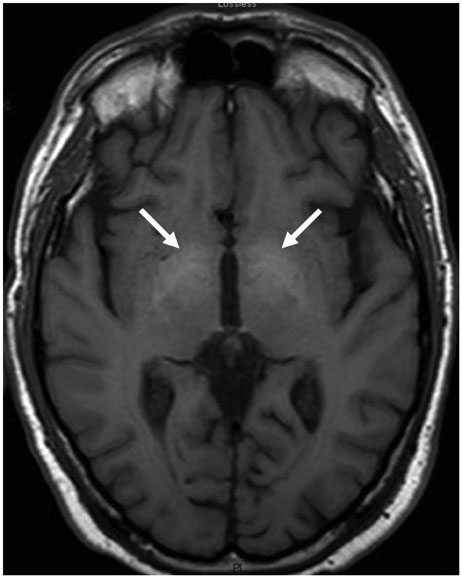J Clin Neurol.
2019 Jan;15(1):128-129. 10.3988/jcn.2019.15.1.128.
Acquired Hepatocerebral Degeneration in the Absence of Portosystemic Shunting
- Affiliations
-
- 1Department of Neurology, San Paolo Hospital, Savona, Italy.
- 2Department of Neurology, Sant'Anna e San Sebastiano Hospital, Caserta, Italy.
- 3Multiple Sclerosis Center, Department of Neurology, University of California San Francisco (UCSF), San Francisco, CA, USA. cordanochristian@gmail.com
- 4Department of Gastroenterology, University of Genova, Policlinico San Martino, Genova, Italy.
- KMID: 2451159
- DOI: http://doi.org/10.3988/jcn.2019.15.1.128
Abstract
- No abstract available.
Figure
Reference
-
1. Ferrara J, Jankovic J. Acquired hepatocerebral degeneration. J Neurol. 2009; 256:320–332.
Article2. Butterworth RF. Neuronal cell death in hepatic encephalopathy. Metab Brain Dis. 2007; 22:309–320.
Article3. Liu X, Sullivan KA, Madl JE, Legare M, Tjalkens RB. Manganese-induced neurotoxicity: the role of astroglial-derived nitric oxide in striatal interneuron degeneration. Toxicol Sci. 2006; 91:521–531.
Article4. Rose C, Butterworth RF, Zayed J, Normandin L, Todd K, Michalak A, et al. Manganese deposition in basal ganglia structures results from both portal-systemic shunting and liver dysfunction. Gastroenterology. 1999; 117:640–644.
Article5. Aggarwal A, Vaidya S, Shah S, Singh J, Desai S, Bhatt M. Reversible Parkinsonism and T1W pallidal hyperintensities in acute liver failure. Mov Disord. 2006; 21:1986–1990.
Article
- Full Text Links
- Actions
-
Cited
- CITED
-
- Close
- Share
- Similar articles
-
- A Case of Acquired Hepatocerebral Degeneration
- Acquired Hepatocerebral Degeneration Presenting with Downbeat Nystagmus and Ataxia: A Case Report
- A Case of chronic acquired hepatocerebral degeneration caused by a porto-systemic shunt by multiple anomalous vessels
- Two Cases of Chronic Acquired Hepatocerebral Degeneration with Parkinsonian Symptoms
- Three Cases of Chronic Acquired Hepatocerebral Degeneration


